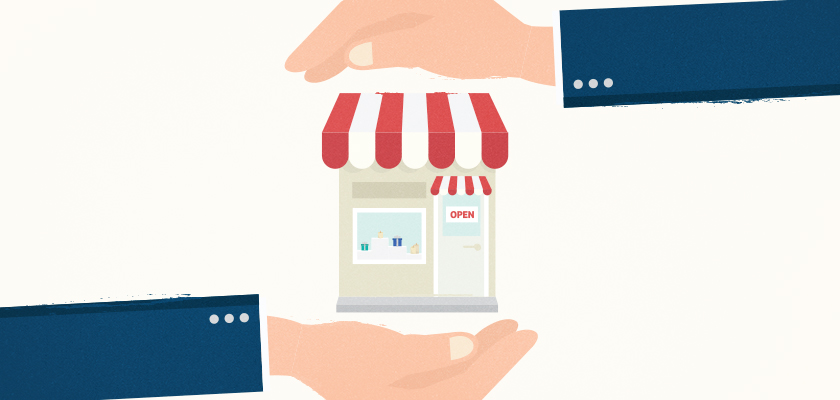Become an insider!
Get our latest payroll and small business articles sent straight to your inbox.

It’s estimated that 39 million Americans have listened to a podcast in the past month, and that number is only expected to grow. Podcasts continue to creep into popular culture with shows such as Serial and the appearance of President Obama on WTF.
This increasing popularity is an opportunity to bring industry expertise to businesses in podcast form.
As host of the TechnologyAdvice Expert Interview Series, I’ve had the opportunity to see what it takes to create your own podcast and watch it grow.
In this post, I’ll outline a few tips to help your small business make the most out of an industry podcast.
1. Get the Content Right
The first step in learning how to make your own podcast is perhaps the biggest and most important step, figuring out what you’re going to talk about.
Will your podcast focus on one topic (growth of touchless payments), one industry (the story of new restaurants in a city), or even broader verticals (B2B technology companies)?
For our podcast, we chose the latter — but only because our customer base is so wide. The goal was to perfectly match our company’s target audience with the target audience of our podcast.
You should do the same.
Once you have the topic nailed down, there are still quite a few questions to answer, such as: who will host, how often will episodes come out, and perhaps most importantly: what will the format be?
After listening to 50 of the most popular business podcasts on iTunes, there are three basic formats that have proven successful:
Hosted Topic & “Roundtable”
Shows such as the Slate Political Gabfest follow this format. There’s often a moderator who asks questions to a panel of guests. They can either be recorded live or in the NPR narration format.
Story
Podcasts such as Startup and Reply-All follow the story of one person or company. This is a great way to provide insight in an interesting and exciting format.
Advice
One of the most exciting podcast formats is giving advice back to your listeners. The most popular business podcast right now is Build a Badass Business in which the host gives tips to listeners. You could use your experience in your respective industry to cater to a more niche audience!
2. Bring Your Podcast to Life
Once you have the format and content down, the next step is to purchase equipment.
At TechnologyAdvice we use a Heil microphone, UR-22, and Adobe Audition. However, podcasting equipment scales quite drastically in either direction — don’t let the equipment keep you from getting started.
There are several apps for call recording, and even the built-in iPhone microphone and a quiet room are reasonable if you’d like to start by recording yourself and a co-worker.
There are also several podcast apps out there to choose from to promote your show, though it’s fairly simple to get your content featured on all of them via RSS. While hosting your podcast everywhere is great, it’s also important to have your audience in mind and find the best way to reach them.
The hardest part of creating a successful podcast is building a loyal audience.
3. Build a Loyal Audience
Let’s talk about some best practices we’ve used to create a passionate listener base.
Transcribe the interview and have your guests post the interview on their blog. This automatically doubles the reach, especially if they help promote the interview socially.
Syndicate the podcast via RSS to platforms such as iTunes because it’s a really simple way to gather additional views. iTunes audiences are also more likely to subscribe — Apple has surpassed 1 billion subscriptions for podcasts via iTunes.
Gain actionable insight from your audience using a service like Libsyn. You can learn which podcasts are being downloaded, where to find additional places to host your content and more.
Add catchy theme music to the podcast to build awareness and recognition of the show.
Give each episode a catchy title that your audience will find appealing. It’s also important to tag relevant phrases so your particular show ranks well when potential listeners search for that topic.
Include a call-to-action at the end of the podcast to urge listeners to subscribe and offer feedback.
4. Measure and Iterate
Once you’ve built an audience you’re proud of, it’s time to iterate and improve! Find out what they’re listening to the most and then go out there and find similar guests to give them more of what they love.
We’ve seen great results in the payroll software category, which is exactly how and why we found the team at Wagepoint.
Ultimately, 32 percent of marketers have a desire to learn how to use podcasting and 23 percent have plans to increase podcast output. It’s up to you to figure out the proper timing and attributes for your brand.
Feel free to add a question or comment below— I’d love to hear your tips and tricks for podcasting.
 Get the entire story in our #smallbiz_expert Twitter interview w/ Josh!
Get the entire story in our #smallbiz_expert Twitter interview w/ Josh!
This blog post is brought to you by Josh Bland, Digital Media Specialist at TechnologyAdvice,
a go-to spot for research, user reviews, and expert advice on business technology.










